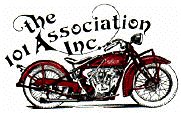Mike Byrne wrote:
Why do you need to chance the bearing from original design?
Are these Timken the taper roller type, or are they thrust bearings with
bearing rollers in horizontal position.
I bought a replacement kit from Reno Indian of the original ball type.
Mike..
Hi Mike,
There's a reason why companies like Timken invented the tapered roller bearing.
In the original bearing with the loose balls, the bearing has a slight side play over time purely due to the design, unless it is pre-tensioned too tightly.
The balls only got tension at two diagonally opposite points.
With tapered roller bearings, the contact surface is multiplied in order to absorb the lateral forces, which means that the steering axle is centered significantly and no longer wears out so much as a bearing with individual balls.
I've often had original bearings where there was a "notch" in the middle position where the balls wear out the bearing race.
This is actually impossible with tapered roller bearings.
I always use tapered roller bearings in all my motorcycles whether they are Indian Norton or Triumph.
Whether street use or racing.
Why stick to outdated designs when there are more durable and better ones out there?
And I forgot to mention...
In the 90s, when we were still racing antique motorcycles all over the world, we took care and use Stuarts Engineer Marking Paint to see how the loose balls in the steering heads were wearing and you could see that that's usually not the case that they lie diagonally but only in the direction of pressure, i.e. top and bottom, which causes the bearings to wear out quickly.
We also measured the loose balls with fairly precise measuring devices (and I still do that today with all the balls or rollers that I use for Indians) and the measured values sometimes differed by up to 8/100mm.
We also tried this with Timken bearings and got less than 1/100mm.
So my opinion is:
Use the more updated version of that bearing when you want to travel much or want to go fast or stick to the crappy original ones ones when it doesn't matter;-)
Greetings
Manny


